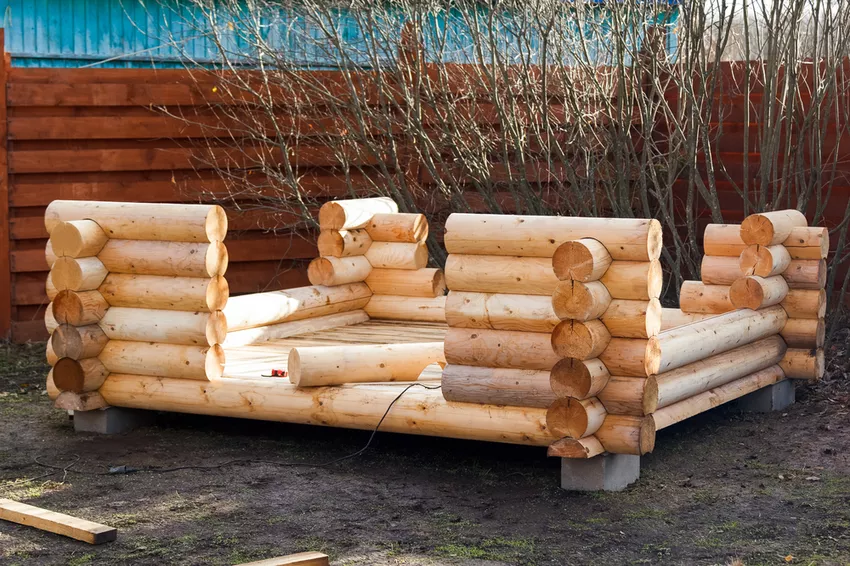- Inexpensive pine
- Extremely popular: spruce
- Attractively weathered larch
- Make sure the wall thickness is sufficient
Garden houses should blend in well with the green area. That is why wood is still the most popular building material for arbors. The ecological building material is alive and fits perfectly into the natural environment thanks to its attractive grain. However, you must pay attention to the type of wood you use, as not all woods are equally suitable.
 Pine, larch and spruce are often used for garden houses
Pine, larch and spruce are often used for garden houses
The most commonly used types of wood are:
- jaw
- Spruce
- Larch.
Inexpensive pine
Pine is currently the cheapest wood you can use to build the arbor. The slightly reddish-yellow material is easy to process and has an interesting grain. However, the pine wood, which is not quite as hard, absorbs liquid, so you cannot do without varnish or glaze with this material for the garden shed (€24.90).
Extremely popular: spruce
Spruce wood is also relatively inexpensive and easy to process. When stored, the almost white wood turns brown to grey. It should therefore be protected from weathering with a glaze or paint.
Attractively weathered larch
Larch is not entirely inexpensive. For this reason, many owners of a gazebo use this wood only for the outer facade. Unlike spruce and pine, larch forms a beautiful, silver-grey shimmer due to the effects of the weather, as is familiar from Black Forest houses. This coniferous wood does not necessarily have to be painted.
Make sure the wall thickness is sufficient
Not only the type of wood is important for the stability of the house, the wall thickness also plays a decisive role. If you don't just want to use the hut as a place to store garden tools and the lawnmower, the wall thickness should be at least 30 millimeters. The thicker the wall, the more robust the wood is, and it doesn't warp as quickly. From a thickness of 40 millimeters you can also take advantage of the pleasant air-conditioning properties of wood.
tips
Also make sure that the wood used comes from Northern Europe. Here the trees grow more slowly due to the cold, which makes the material particularly hard-wearing and harder.